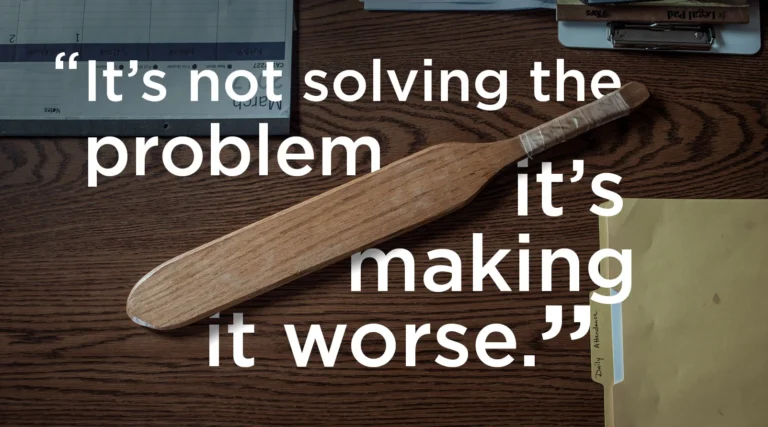I live in the Philippines, where hitting children isn’t just common but often seen as a normal, even necessary, part of discipline. Many parents still believe that physical punishment, including spanking, flogging, and other forms of physical force, is the key to correcting a child’s misbehavior.
Is corporal punishment truly a part of an effective discipline strategy? Or are there better ways of teaching children without hurting them?
To all the parents reading this, let me be clear: I’m not here to impose my views on you. But today, I’d like to share what I’ve learned about physical punishment from developmental psychology, adolescent psychiatry, and international research.
By the end of this post, you’ll be in a better position to decide whether hitting children or using corporal punishment truly helps shape a child’s behavior or if it simply puts them at increased risk of harm.
Why Are Parents Hitting Children?

Approximately 1.2 billion children worldwide receive physical punishment regularly, with 400 million of them under the age of five. However, the situation is even more alarming when we zoom in on Southeast Asia.
In countries like the Philippines, Myanmar, Indonesia, and China, over 70% of children aged 2 to 14 experience corporal punishment at home, which usually comes as a full package deal. Yelling, name-calling, curses, and threats are routinely thrown in for good measure.
But these numbers only reflect what’s been reported. They don’t account for the quiet, hidden cases. The stories no one hears. The families who were never surveyed. The actual number is likely much more staggering.
When I spoke with friends and acquaintances about how they discipline their kids, a handful sheepishly admitted to using physical disciplinary methods as a last resort or when there were clear acts of defiance among older kids.
On the other hand, some wear this approach like a badge of honor, proudly saying, “That’s how we’ve always done it. Now look how fine I turned out,” while criticizing those who opted for gentle parenting.
If you step back and look at what’s happening, it couldn’t be more textbook: parents who grew up getting smacked around are about twice as likely to pass the “tradition” down.
But do we really have to keep falling back on physical punishment whenever things spiral out of control? Or have we just stopped looking for other options? Maybe… just maybe… we’ve been so deeply conditioned to think that hitting children is the most effective way (or the only way), when in fact, there are healthier strategies to raise our kids.
Spanking Is a Child’s First Taste of Violence
Spanking is often a child’s first direct encounter with violence, and sadly, it usually comes from the people children trust the most.
In households, especially in cultures where corporal punishment is normalized, shouting and spanking feel like natural reactions to misbehavior. It’s no surprise we have a Filipino idiom for it: magaan ang kamay, which translates to “nimble hands” that make spanking swift and effortless.
Most parents may not admit this, but most instances of hitting children are more about releasing frustration. We strike out when we’ve reached our limit… when we’re tired, burned out, or dealing with so much stress from work, finances, health problems, or even our unresolved trauma.But as adults, we’re expected to handle our emotions with maturity. When we hit children out of anger or frustration, we’re modeling a lack of self-control and sending a message that it’s fine to use physical force when you’re upset… or at you’re wits’ end.
Physical Punishment Only Achieves Short-Term Compliance
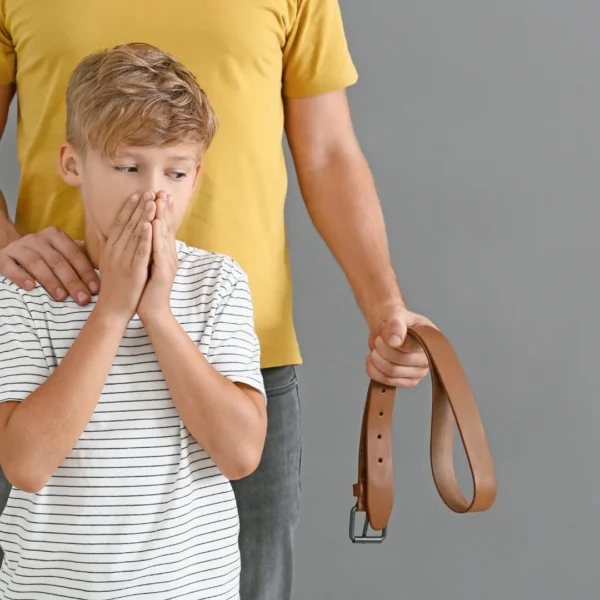
I understand that many parents turn to physical force with the hope of curbing misbehavior, believing that punishment will reduce its recurrence and encourage better habits down the line. On the surface, this might seem effective, but it doesn’t eliminate the unwanted behavior itself.Physical force only drives poor conduct underground. Over time, children simply become experts at not getting caught. Kids learn to lie, sneak out, and act out when adults aren’t around because they haven’t internalized the value of doing what’s right.
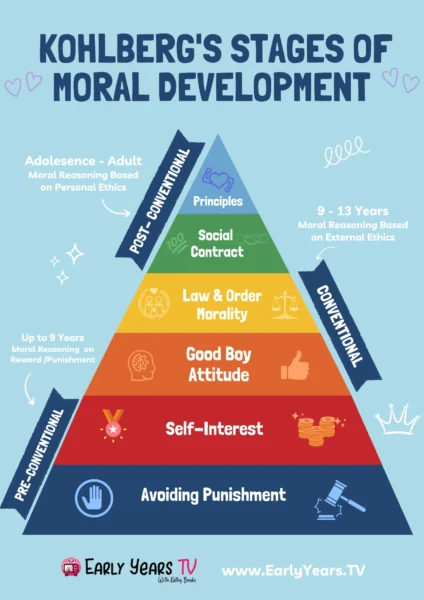
According to Lawrence Kohlberg’s theory of moral development, the lowest level of morality is based on fear of punishment. The highest level is doing what’s right because one understands and believes in its value.
When parents use corporal punishment, they inadvertently keep children stuck at the lowest level, motivated to comply due to fear rather than guided by conscience.
Hitting Children Models Aggression
Children are a handful; they’re boisterous, messy, and strong-willed. Sometimes, they can be aggressive, too, but responding to that aggression with physical force compounds it.
Aggression (be it physical or verbal) teaches retaliation instead of restraint and chips away at a child’s ability to develop empathy.
Children absorb what adults do through observation. So when they see their parents using physical force to deal with frustration or disobedience, they internalize that response as acceptable and normal. In their minds, hitting becomes a legitimate way to express anger, assert control, or get what they want.
The result is a confusing double standard. Parents would often say, “Don’t hit others; it’s wrong,” while simultaneously using hitting as a disciplinary tool. This sends the message: “It’s not okay for you to hit, but it’s okay when I do it because I’m the adult and I’m in charge.”
That contradiction goes beyond confusing children. It shows them that having power gives someone the right to use force. And one day, they’ll apply that lesson when they become the “person in charge”—whether as a parent, partner, or person in authority.
Corporal Punishment Impairs Moral Reasoning
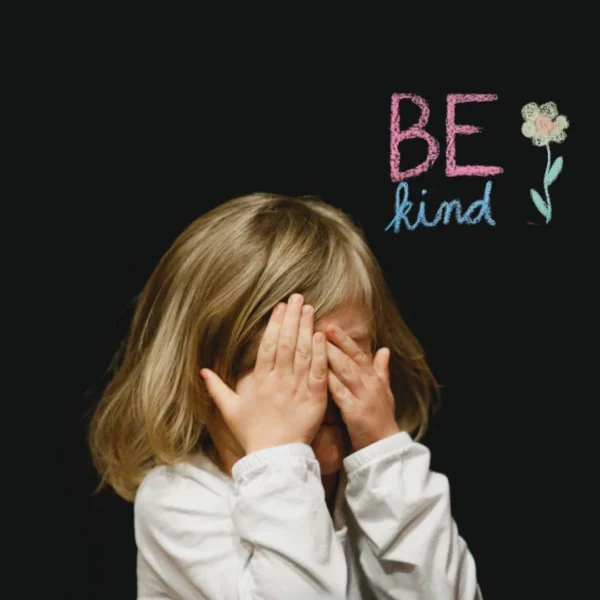
Some parents might argue, “But we talk to our child afterward.” Even people I know genuinely believe that a heartfelt sermon after flogging a child with a stick helps the message stick. But pain doesn’t make lessons more impactful.
Children may nod along, but panic and confusion overshadow the words that follow. We’ve all been there! As kids, we went straight into fight, flight, or freeze mode the moment we realized we were in trouble.
That stress response shuts down the prefrontal cortex that governs moral thinking. And here’s what often gets overlooked: moral development depends on reflection and curiosity. Children need space to ask, “Why was that wrong?“
But fear shuts that process down. A terrified child doesn’t ask questions, does he? His brain is busy trying to manage fear.
On top of that, multiple studies show corporal punishment alters brain activity, increasing the risk of anxiety, depression, and aggressive behavior.
Simply put, you can’t reason with someone while harming them, let alone a child who has an underdeveloped brain. Logic doesn’t land when fear takes the wheel.
I remember stacking a bunch of Pyrex glasses in the sink when I was four—so well that they got jammed together looking like the Leaning Tower of Pisa. But instead of yelling or spanking me, my dad sat me down and calmly explained why that wasn’t a smart move.
That was it! Just a clear, calm correction. I learned that those things were basically luxury items in a poor household. My little brain tells me that if I made the same mistake again or anything similar, I’d hurt my parents, who had to save just to buy something nice.
Three decades later, that memory is still etched in my brain… not because of pain but because the correction made sense to my younger self.
Hitting Children Warps a Child’s View of Love and Fuels Toxic Family Patterns
Intimidation and physical force teach children a deeper, more dangerous lesson: if someone loves you, they’re allowed to hurt you if it’s “for your own good.” This isn’t just a parenting issue but a blueprint for future relationships.
When love is laced with fear and correction is delivered with a slap or a threat, children grow up associating violence with affection. They learn that control equals care, that dominance equals love, and that being on edge is just part of being close to someone.
Tragically, these early experiences can plant the seeds of emotional confusion that bloom later into toxic dynamics. In adolescence, they may accept manipulation or aggression from peers or partners because it feels familiar. In adulthood, they may mistake red flags for passion or use anger to assert control—simply repeating what they’ve been taught.
Final Thoughts: Discipline Doesn’t Have to Hurt
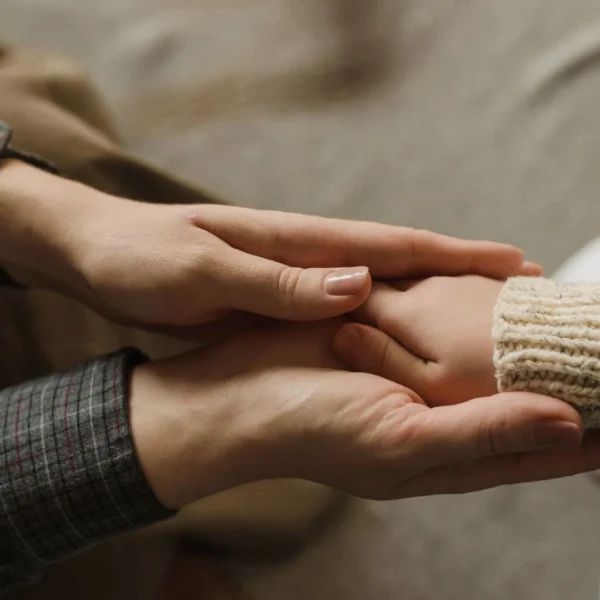
If corporal punishment is so harmful, why do so many parents still use it? The answer isn’t always about cruelty or ignorance. It’s often about survival, tradition, and fear of failure. Add in economic hardship, unstable environments, or community pressures—strict control suddenly feels like the only way to keep children safe or respectable.
For parents raised in households where physical punishment was normal, the idea of “hitting out of love” doesn’t sound cruel—it sounds familiar. Many genuinely believe that without fear, children will spiral into defiance, failure, or worse.
But love doesn’t have to hurt. The fact that so many parents are doing the best they can with what they were taught doesn’t mean we can’t do better moving forward. By letting go of fear-based discipline, we make space for real connection, reflection, and emotional safety.
We raise children who don’t just obey out of fear but act with empathy and confidence. And perhaps most importantly, we begin to heal the generational wounds that taught us that love must come with pain.

